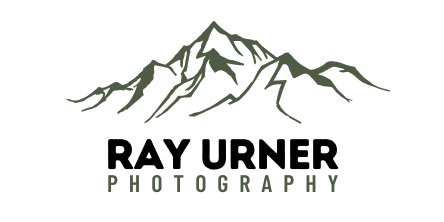How to Photograph a Rainbow in a Waterfall
Rainbow in Narada Falls in Mt. Rainier National Park
Photographing a rainbow in a waterfall combines two of nature’s most mesmerizing phenomena into one stunning image. It requires patience, the right conditions, and a bit of technical know-how. This guide will help you capture that perfect shot of a rainbow glistening through the mist of a waterfall.
Essential Equipment
Camera: A DSLR or mirrorless camera with manual settings.
Lens: A wide-angle lens (16-35mm) or a standard zoom lens (24-70mm) to capture the whole scene.
Tripod: For stability and sharp images, especially in low light or longer exposures.
Polarizing Filter: To enhance the rainbow’s colors and reduce glare from the water.
Lens Cloth: To keep the lens clean from water spray and mist.
Step-by-Step Guide to Photographing a Rainbow in a Waterfall
1. Understand the Conditions
Rainbows occur when sunlight is refracted and reflected off water droplets in the air. For a rainbow to form at a waterfall, you need:
Bright Sunlight: The sun needs to be at a low angle, usually in the morning or late afternoon.
Mist: The waterfall should produce enough mist for the sunlight to interact with.
2. Find the Right Location
Scout the location beforehand to find the best spot where the sunlight and mist will create a rainbow. Typically, you'll need to position yourself with the sun behind you and the waterfall in front of you. This alignment allows the sunlight to pass through the mist, creating the rainbow effect.
3. Use a Sturdy Tripod
A tripod is essential for stabilizing your camera, especially if you need to use a slower shutter speed or if you’re shooting in low light. Set up your tripod on stable ground, ensuring it’s secure to avoid any camera shake. And if you want that silky smooth effect, you WILL be using a slower shutter speed!
4. Attach a Polarizing Filter
A polarizing filter can make the rainbow more vivid by reducing reflections and glare from the water. Rotate the filter until you see the rainbow’s colors intensify in your viewfinder. This filter can also enhance the overall contrast and saturation of your image.
5. Select the Right Camera Settings
Aperture
Use a mid-range aperture (f/8 to f/11) to ensure a good depth of field, keeping both the waterfall and the rainbow in focus.
Shutter Speed
Depending on the lighting conditions, you might need to adjust your shutter speed. In bright sunlight, a faster shutter speed (1/100 to 1/250 second) can freeze the motion of the water and mist. For a more ethereal look with a silky smooth waterfall, use a slower shutter speed (1/4 to several seconds) and consider using an ND filter to avoid overexposure.
ISO
Set your ISO to the lowest possible setting (ISO 100 or 200) to minimize noise and maintain image quality.
6. Focus and Compose Your Shot
Manual Focus
Use manual focus to ensure precision, especially if the autofocus struggles due to the mist and lighting conditions. Focus on a point where the rainbow is most vibrant.
Pro Tip: Turn Focus Peaking on!
Composition
Compose your shot thoughtfully, considering the rule of thirds to place the waterfall and rainbow off-center for a more balanced and dynamic image. Include interesting foreground elements like rocks or foliage to add depth. There should be lots!
7. Experiment with Different Angles
Change your position and angle slightly to see how the rainbow shifts and intensifies. Sometimes moving a few feet to the left or right can dramatically change the rainbow's visibility and vibrancy.
8. Use a Remote Shutter Release
To avoid camera shake, use a remote shutter release or the camera’s built-in timer, especially when using slower shutter speeds.
9. Post-Processing Tips
Enhance your images in post-processing software like Adobe Lightroom or Photoshop to bring out the best in your waterfall rainbow photo.
Basic Adjustments
Exposure: Adjust the exposure to ensure the waterfall and rainbow are correctly lit.
Contrast: Increase contrast to make the rainbow stand out against the waterfall.
Highlights and Shadows: Fine-tune highlights to recover any blown-out areas and adjust shadows to reveal details.
Clarity and Vibrance: Increase clarity to enhance details and vibrance to make the rainbow colors pop.
Advanced Techniques
Selective Color Adjustments: Use selective color adjustments to enhance the rainbow without affecting the rest of the image.
Dodging and Burning: Lighten or darken specific areas to guide the viewer’s eye and add depth to the image.
Happy shooting, friends!
Rainbow in Lower Yosemite Falls in Yosemite National Park






